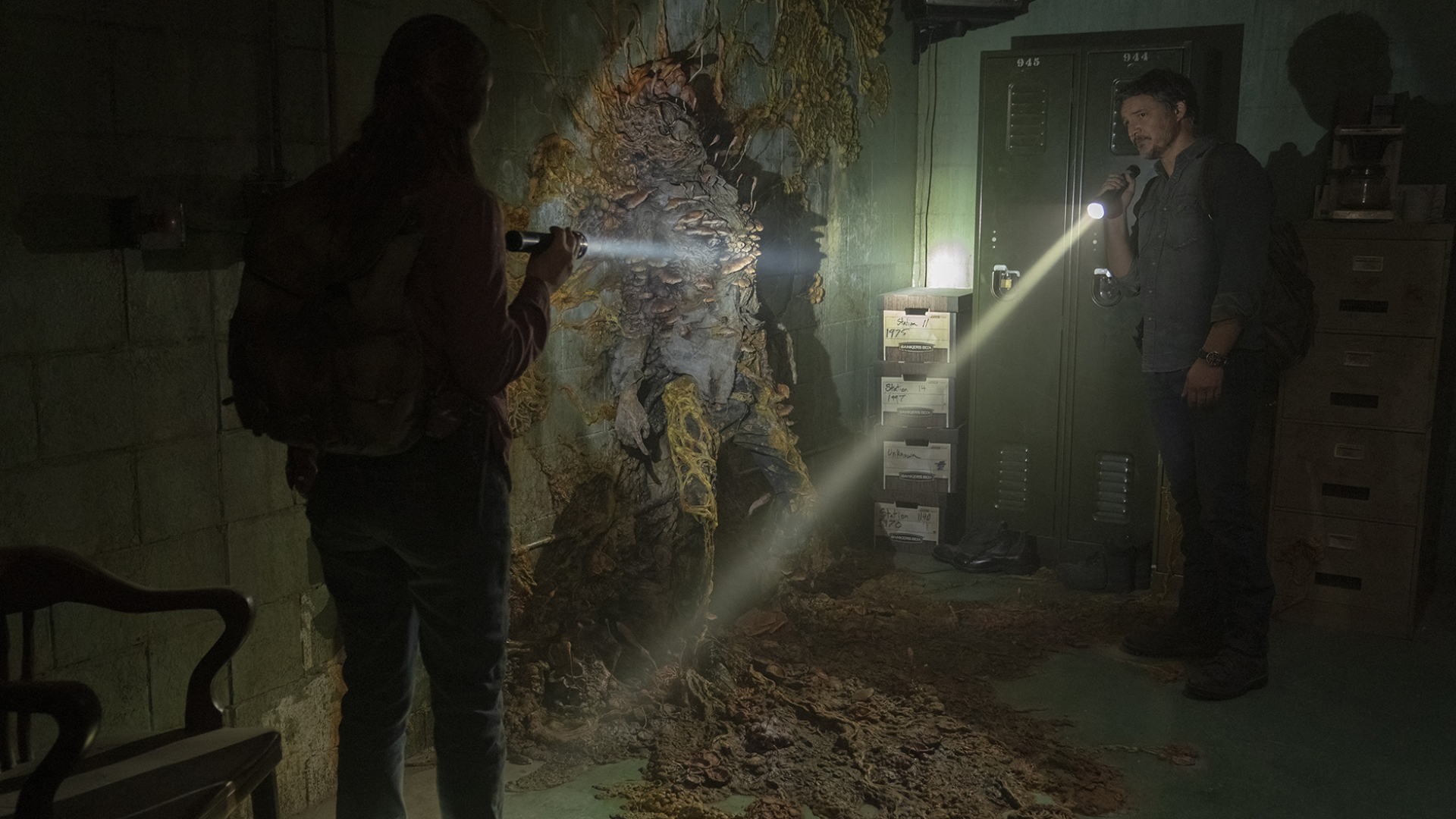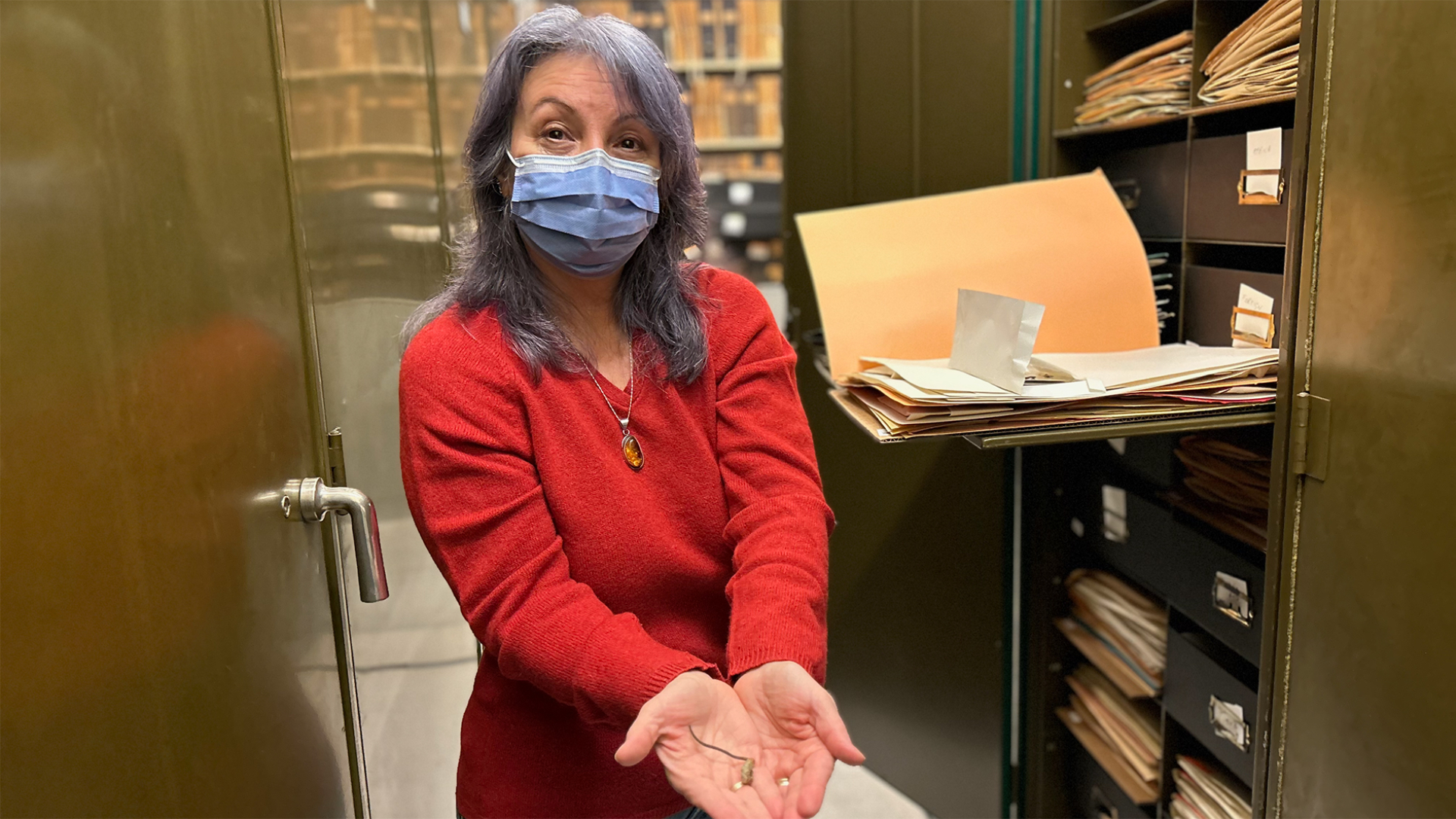A ROM fungi expert weighs in
Warning: This article contains spoilers for the first two episodes of The Last of Us.
Following a hardened smuggler (Pedro Pascal) as he ferries a 14-year-old girl (Bella Ramsey) across a zombie-infested America, HBO’s The Last of Us is both a video game adaptation and a horror thriller—neither of which are exactly hallmarks of prestige television. But the series, now two episodes deep into its nine-episode first season, has already proven a success with critics and fans. Much of that success is due to the rich characterization and thoughtful storytelling plucked from the original game, whose chief architect, Neil Druckmann, is co-creator of the HBO show. (Having Craig Mazin, the mastermind behind the Chernobyl miniseries, as the show’s other co-creator surely hasn’t hurt either.)
Yet what makes The Last of Us especially unique is its villain: a cordyceps mushroom that infects humans, turning them into rampaging, flesh-eating monsters with the ability to communicate via a vast underground mycelium network. And with the TV series, Druckmann and Mazin have doubled down on the fungal horror, devoting both cold opens in the first two episodes to understanding the unique mechanics of this mushroom-driven pandemic.
To dig into the science of the show, I interviewed Simona Margaritescu, a mycology technician at ROM. This is our conversation.
In zombie movies and TV shows, viruses are almost always the cause. What was it like to see a mushroom as the Big Bad?
I was very happy, although fungi are not always enemies. They have important roles in in the life of ecosystems—for humans as well.
In the cold open of the pilot, a scientist explains that “there’s a fungus that…gets inside an ant…travels through its circulatory system to the ant’s brain and then floods it with hallucinogens, thus bending the ant’s mind to its will.” This, I know, is true, but are there other real-life examples of fungal mind control?
I was shocked reading this review article that says there are probably about 1.5 million species of fungi that infect animals, insects mainly, which makes sense because the insect group is humongous. Now, not all these fungi are zombifying their hosts. But everything about zombification is meant to make the fungus more successful, to find the best conditions and the best location for the fungus to propagate. It sounds really horrifying. And you can say, “Poor ants,” but if these fungi weren’t there to induce diseases in the ant population, we’d probably be taken over by ants.
If you have food and no predators, usually a population grows without limits, and then it starts collapsing on its own anyway. So, in a way these fungi are doing a favor to the ant population. It kind of reminds me of the movie Hot Fuzz: “It’s all about the greater good.” [laughs]
You also have zombie cicadas that are infected by a species called Massospora cicadina. So, these affect only some cicada species, and they have a different mechanism of dealing with the host. The mycelium of the fungus fills the cicada’s abdomen and replaces its reproductive organs. Then the fungus induces of kind of a sexual craze in the insect, so it will mate more to spread the spores.
In that same scene from the pilot, the scientist warns that if mushrooms evolved to withstand human temperatures, they could “burrow into our brains…taking control not of millions of us, but billions of us.” Is this possible?
Well, in science everything is possible. [laughs]
But, on a practical level, the species would probably have to go through a lot of evolutionary steps, so I don’t think it’s possible in the near, or even longer-term, future. But you never know. It depends on other factors, like if somebody decides to weaponize these fungi. But I don’t think it would be very easy to do that.
One more thing: There are fungi that can live at human body temperatures.
There is a species, Penicillium marneffei, that can grow in environmental temperatures, where it looks like a fungus, or it can infect human tissue. And in a human body it grows in yeast form, so just small cells. We've seen a lot of immunocompromised people with different fungal infections, different molds growing inside their body or on the surface of their skin.
I mean, all humans have fungi on our skin that grow with us and don't bother us. But if the immune system gets weaker, or various conditions happen, then the fungi will take over.
The Last of Us pandemic is caused by a cordyceps mushroom. Tell us a bit about that genus of parasitic fungi.
Actually, the ones they portray are probably species evolved from Ophiocordyceps, and Ophiocordyceps is the main culprit for the zombie ants.
This whole group belongs to the Hypocreales, a group of Ascomycota, which are fungi that could be loosely grouped together because they produce their sexual spores inside the cell, opposed to other groups of fungi that produce their spores outside the cell or through a different kind of mechanism.
Cordyceps are used in herbal supplements. Have you ever tried—or would you ever try—eating these mushrooms?
Chinese traditional medicine has a lot of uses for cordyceps. It’s supposed to increase the efficiency of your immune system and, since cordyceps can manipulate systems in their hosts, maybe there is something there. And if psilocybin [the psychoactive ingredient in magic mushrooms] is proven to help with mental health, why not believe that we might find something in the future? But, so far, the data is inconclusive.
Is there anything else that struck you about The Last of Us?
The zombies don’t see, but they can hear you. Why would a fungus that has evolved to use its host take away vision—the most important sensorial system humans have? But, overall, I think it was well done.
This interview has been edited for length and clarity.


